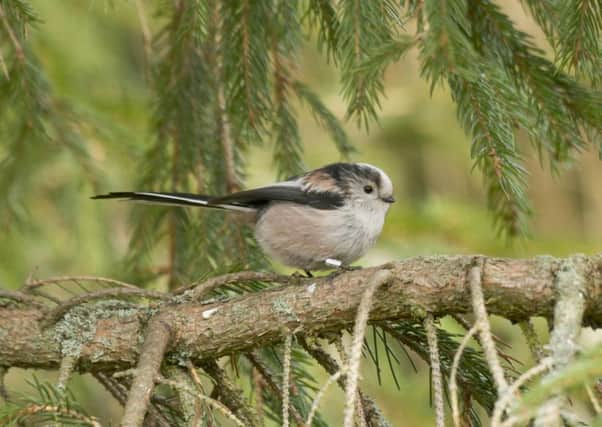Long-tailed tits flourishing in Scotland after mild winter


The gregarious birds, which are just 13 to 15cm long, are vulnerable to extreme cold weather due to their size and the difficulties of foraging for insects in frost and snow.
However, the latest RSPB Big Garden Birdwatch survey held in the last weekend of January shows that the percentage of gardens visited by a long-tailed tit rose by 166 per cent compared with 2015.
Advertisement
Hide AdAdvertisement
Hide AdAlthough house sparrows, chaffinches and starlings remain the top three birds spotted in Scotland’s gardens this year, more than a third (34 per cent) of participants recorded a long-tailed tit, up from 12.9 per cent in 2015. The average number of long-tailed tits seen visiting gardens also increased by 17.9 per cent.
Experts say the species and other smaller gardens birds such as coal and great tits benefited from milder weather in the months before Birdwatch.
Keith Morton, species policy officer at RSPB Scotland, said: “The increase in smaller garden birds recorded, such as long-tailed tits, suggests that the lack of sustained cold weather helps these species survive in far greater numbers over the winter months. The food these birds rely on, such as insects, would have been easier to find, helping to boost the numbers of them spotted.”
Since 2006 the average number of long-tailed tits seen in UK gardens has risen by 52 per cent, while great tit numbers have gone up by 13 per cent and coal tits by 9 per cent.
Many other garden favourites are still struggling. In Scotland, sightings of well known species such as starlings and song thrushes saw another drop this year. This decline continues a trend that has seen the number of both species visiting UK gardens fall by 81 per cent and 89 per cent respectively since the first Birdwatch in 1979.
The house sparrow maintained its position as the most spotted bird in Scotland’s gardens with an average of 6.09 sparrows per garden.
More than 36,000 people across Scotland took part in the 2016 Birdwatch, counting 626,335 birds.